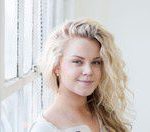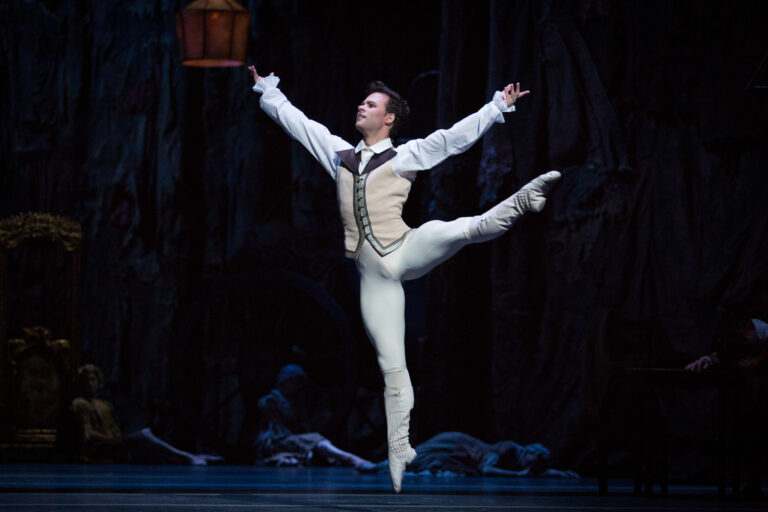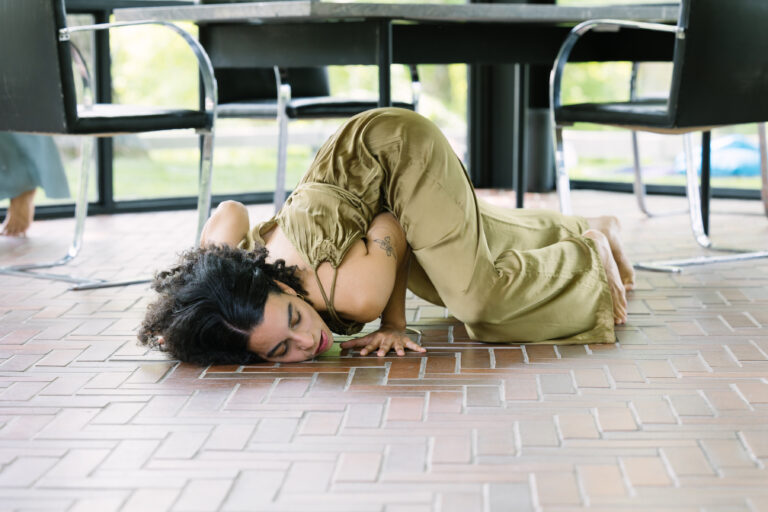
You may know Britt Stewart as the first Black female pro in “Dancing with the Stars” history. But what you may not know is that this fan favorite didn’t have any formal ballroom training until just four years ago.
Stewart trained as a competition dancer at Artistic Fusion Dance Academy in Colorado before moving to Los Angeles, where she’s had the kind of career most commercial dancers only dream of: We’re talking all three of the High School Musical movies, Teen Beach Movie, “Glee,” multiple major awards shows, and backup dancing for stars like Janet Jackson and Katy Perry.
By the time the “DWTS” Troupe opportunity fell in her lap she was confident she had ticked everything off her commercial-dance bucket list. “I was craving a new challenge,” she says. “And, boy, did I get it.”
Stewart describes joining the “DWTS” Troupe in 2016 as totally serendipitous. “I was in rehearsal for Disneyland’s 60th anniversary when Derek Hough and Mandy Moore saw me dance,” she says. “They got me an audition for the Troupe and six months later I was on the show without any formal ballroom training.” (The Troupe is a group of professional dancers who performed on “DWTS” but were not paired with celebrities to compete. Troupe has not been part of the show for the past two seasons.)
She has since thrown herself into the ballroom world, training and competing professionally, and finally earning herself the highly coveted role of pro on Season 29 of the series. “Becoming a pro has been a dream of mine ever since I joined Troupe,” she says. “It’s the opposite of anything I have ever done before, and I am totally obsessed with it.”
Here, Stewart reflects on her training journey and the dance educators who have shaped her.
The most helpful correction she’s ever received:
“Kenny Ortega used to tell me that it’s all about the story, and to maintain an inner dialogue. Don’t do choreography just to do choreography, but have something behind it so there’s authenticity to what you’re dancing.”
On her dance-training turning point:
“Taking ballet as a young girl. My dance teacher didn’t want me to fit a stereotype. Back then in the comp world, Black girls were known for great tap solos and being really good at hip hop. Even though I was skilled at tap, she pushed me to be really good at other things, as well. So, I started doing ballet and Pilates privates, and it changed my training. At competitions, judges would say I was a great performer but that I needed to work on my technique. I still remember the first time I got a note saying I had really good technique. My hard work had actually paid off.”
On the worst advice she’s ever gotten:
“When I was 8 years old, I was standing out in my competition number, and the judges kept pointing out the little girl in yellow. Instead of celebrating the fact that I was standing out, my teacher told me to hold myself back to fit in with the group. Thankfully, I was young enough that I wasn’t too self-conscious yet, and was able to break out of that mindset shortly after when my mom and other teachers told me to just go for it.”
On her most influential teacher:
“Jenny Jarnot took me out of my mold, and told me I could be amazing and that she saw potential in me. She shaped me into who I am. To this day she sends me inspirational quotes, and we talk all the time. I’m so grateful to be connected to this amazing, strong woman who is passionate about me and so giving.”
On choosing a career over college:
“I got accepted to Loyola Marymount University. I’ve always loved school, but I always knew I wanted to dance. My parents are educated businesspeople who felt college was really important. So, I ended up going to LMU. I only made it a semester and a half when Kenny Ortega called and said they were making a third High School Musical movie and that I needed to be part of it. So, I left school and filmed the third movie, and after that I got an agent. I don’t like not finishing things. I went back and forth about returning to school, but my parents finally said, ‘God is clearly presenting these opportunities—the door is wide open to your dance career.’ I haven’t stopped dancing since.”




